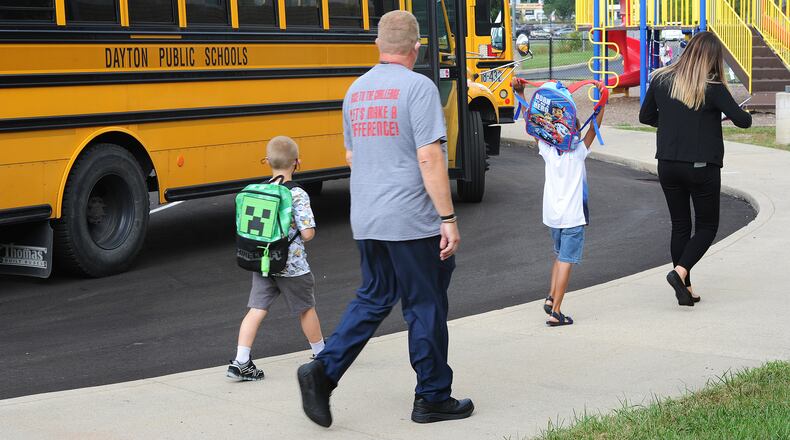The quadrant system has been a school district goal for years, but Lolli said district officials haven’t enforced it consistently, and that has led to extreme inefficiencies. Lolli said some families would move but not report it to the schools.
“They don’t tell anyone (about the move), but call the bus garage and say, hey, I need a pickup at this address to go to Westwood. And (our transportation department) was doing that,” Lolli said. “You can’t expect a bus to drive a half-hour to pick up two kids to bring them a half-hour back across town. We don’t have enough drivers and we don’t have enough buses.”
But Lolli acknowledged that when school started Aug. 18, there hadn’t been effective enough communication with families about the changes. That was made worse by the fact that hundreds of transportation notices the district mailed out were returned as undeliverable.
Families complained on social media that their children who had been bused to out-of-quadrant schools for years suddenly didn’t have transportation on the first day of school, without notice.
“I’m frustrated that my elementary student, who has been getting transportation for the past five years, is now stuck without transportation,” said Dayton parent Gloria Nichols. “She has to be at school at the same time I have to be at work. And Dayton Public didn’t communicate with us.”
Nichols said her daughter’s godmother is currently getting her to Horace Mann elementary, which is outside of their quadrant. She’s frustrated because her only other option is to switch her out of the only elementary school she’s ever attended, in her final year before middle school.
“If they would have given us months notice about something they were going to implement next year, we could have been aware and made sacrifices and planned,” Nichols said. “But they didn’t do that.”
Lolli sent a letter to families last week, saying that the district’s transportation department “should not have continued to transport out of the quadrant,” adding that “many students need to either enroll in the school closest to their homes or the parent needs to transport to the previous school.”
That’s a problem that should have been solved before the start of the school year, but Lolli said that was difficult because of another long-running tradition — constant turnover in the transportation department.
Tyler James is the district’s new chief of transportation, but he wasn’t hired until late July, along with a new associate director of transportation and a new director of routing and dispatch.
James is the fifth leader of the district’s busing efforts in the past four years.
“By that point we were about a month away from school,” Lolli said. “They got into it and routed, but the data wasn’t up to speed. They didn’t have all the quadrant data, the grandfathered kids, the (special education) lists. It’s just been one thing on top of another.”
The quadrant system doesn’t apply to certain special education students, or to DPS’ district-wide specialty schools (Stivers for arts, Ponitz and Meadowdale for career tech, River’s Edge for montessori, and the Charity Earley girls-only school).
At the school board meeting one day before the first day of classes, multiple school bus drivers complained about a lack of communication as the district’s new transportation leadership scrambled to get students routed.
One of the results of the busing problems is that DPS’ student attendance rate for the first week of school was an abysmal 79.74%, well below the 91% that was the district average before COVID.
Lolli said she’s hopeful the issue will get sorted out, but she knows there are big impacts now.
“The chronic absentee number the state is going to send out in the next month is going to be very, very high,” she said.
About the Author

